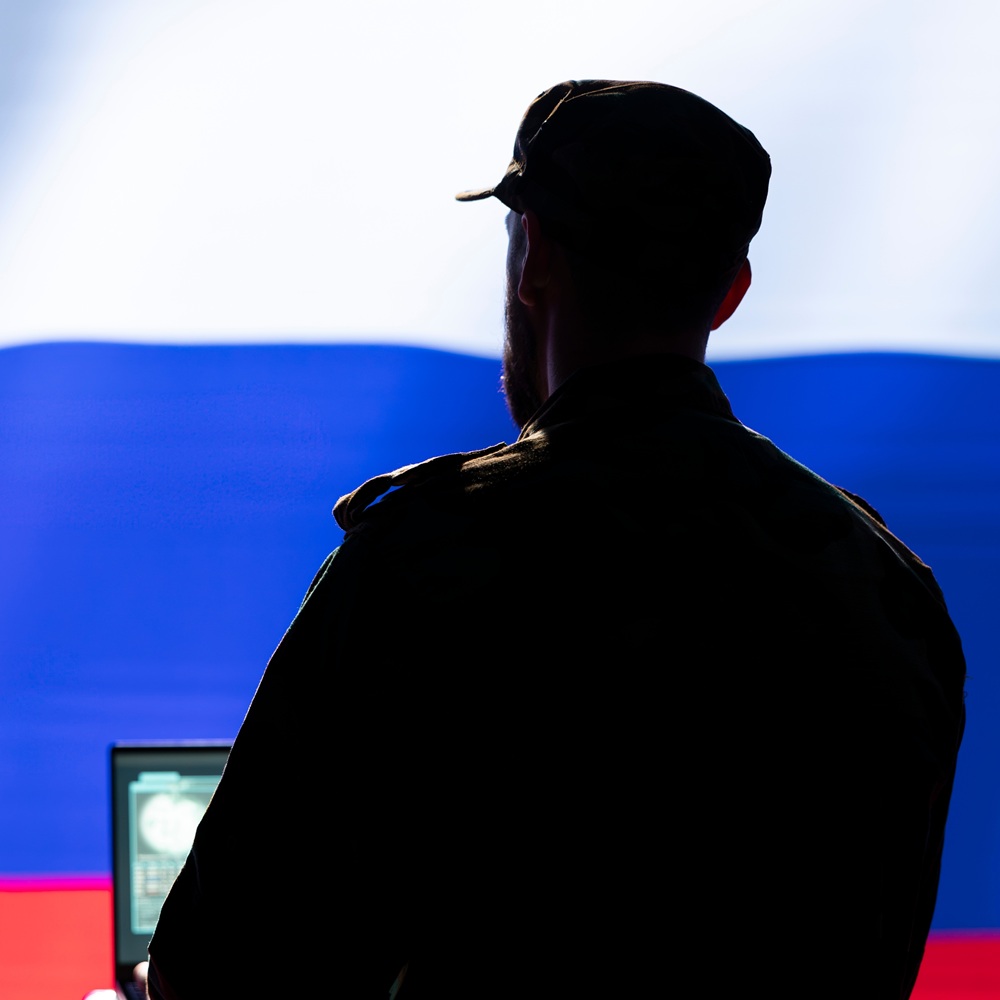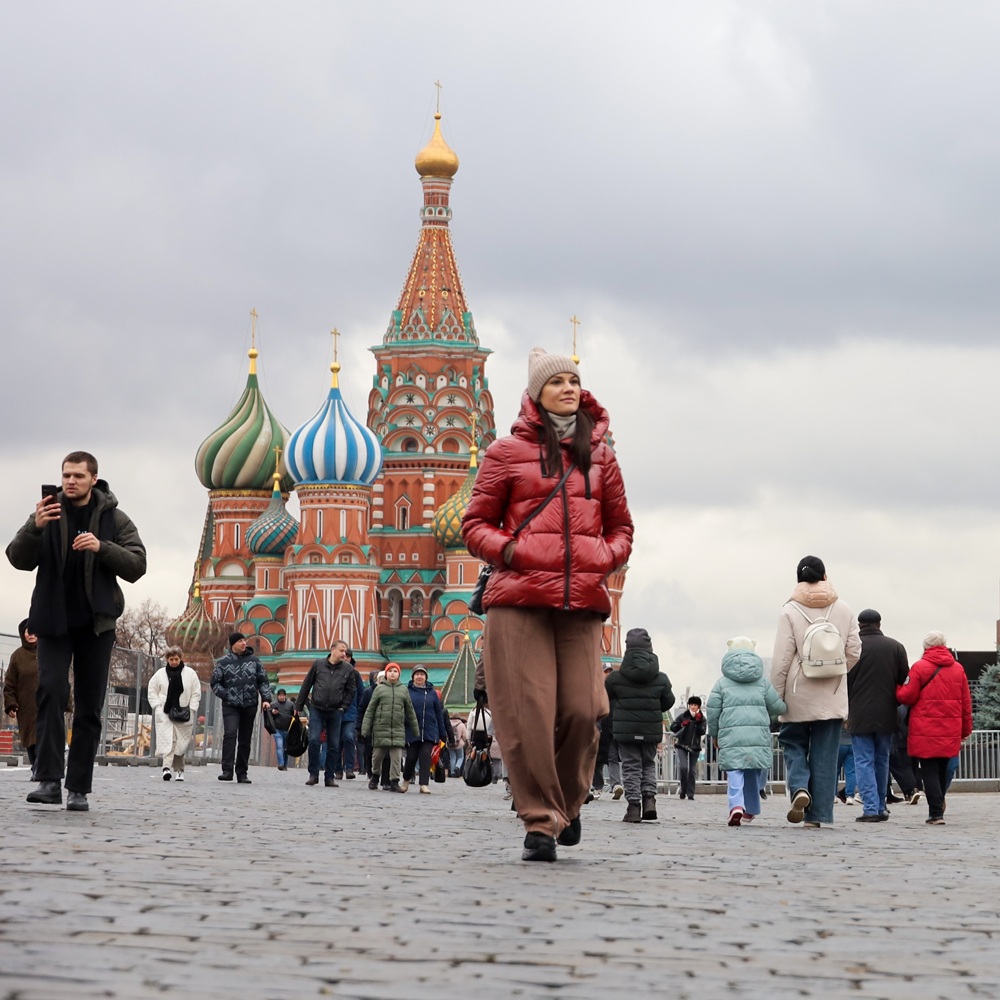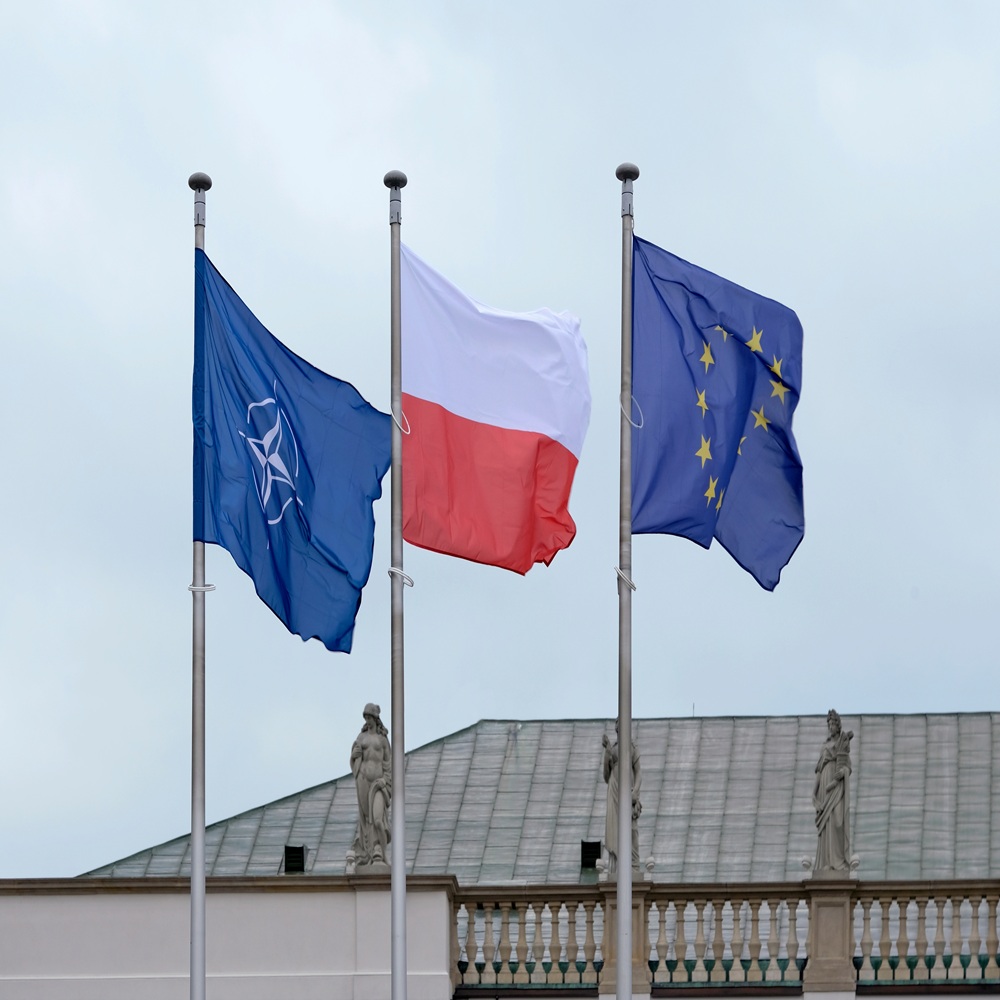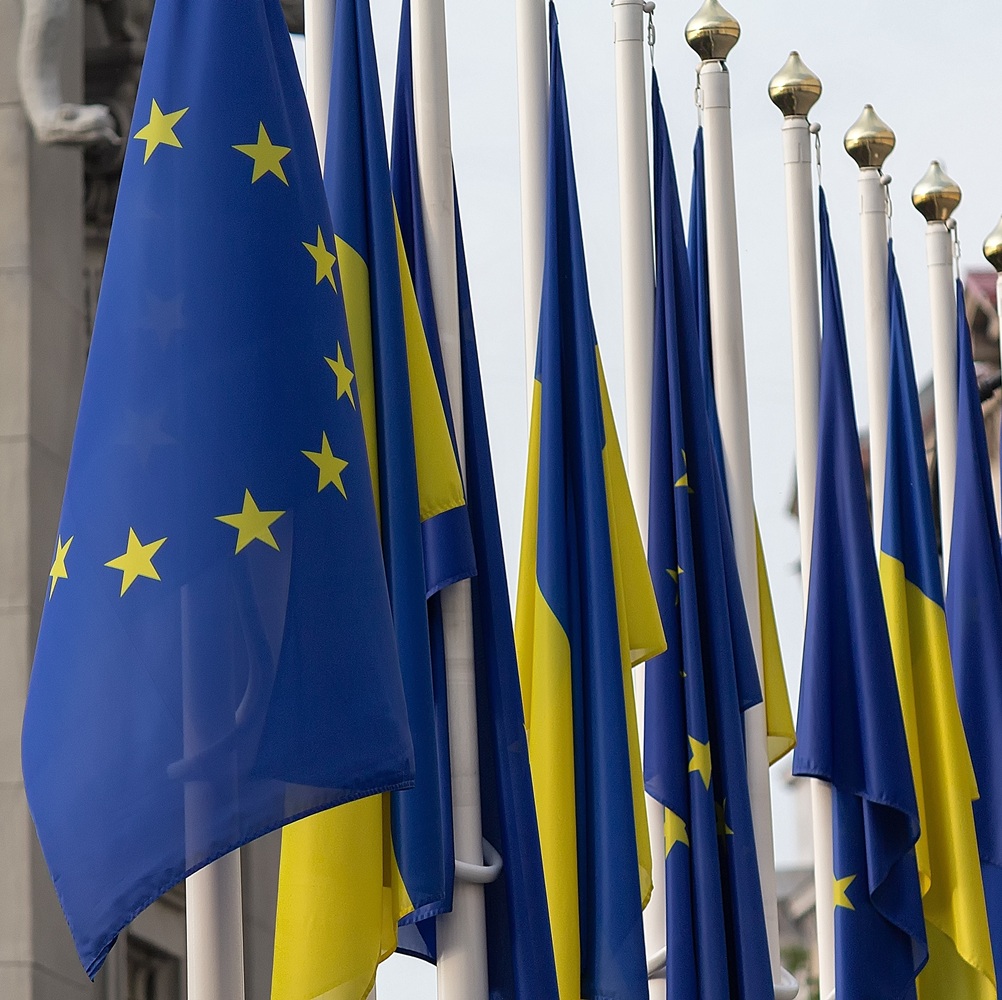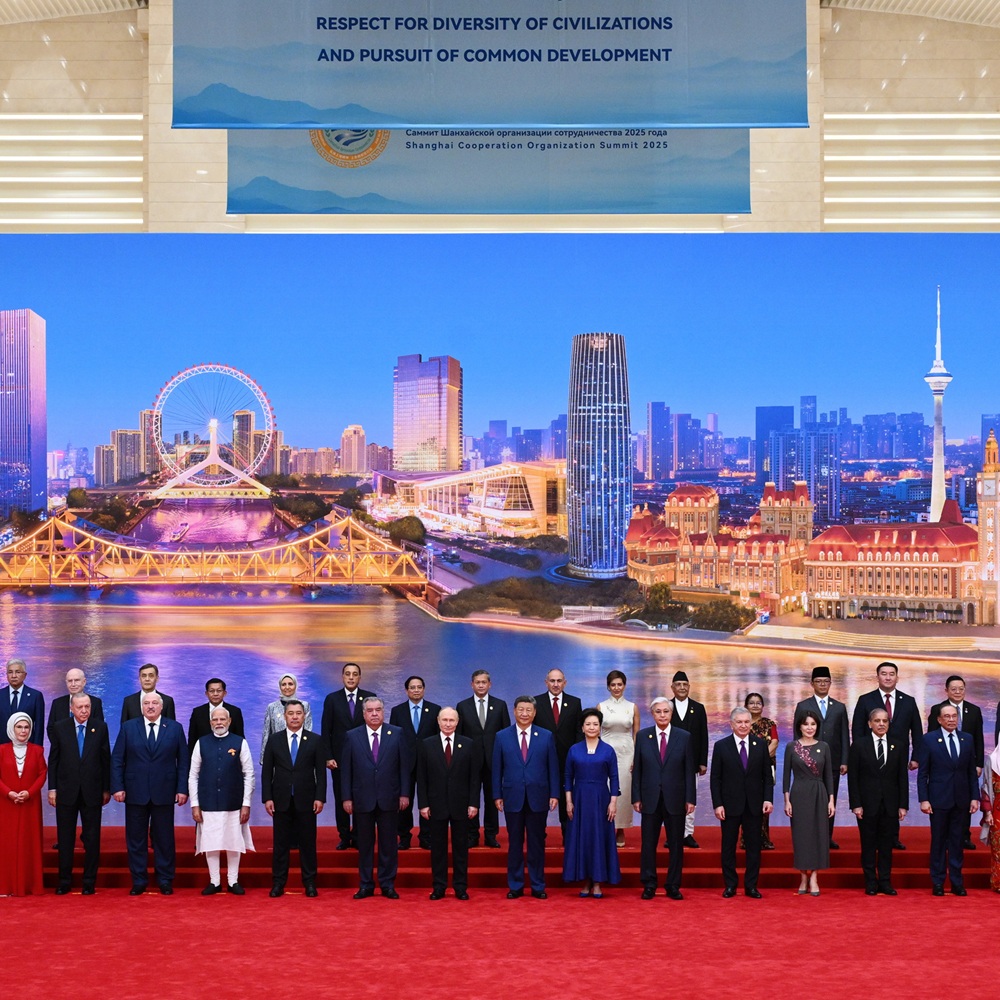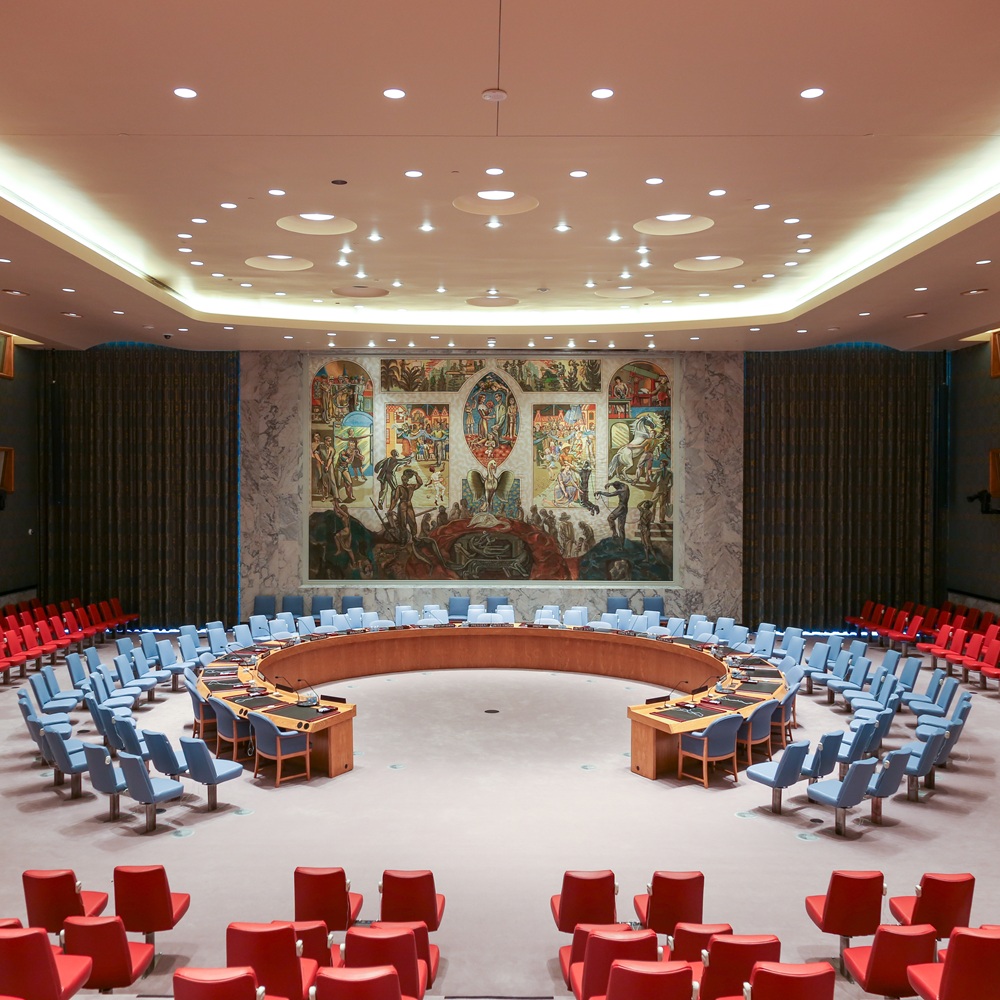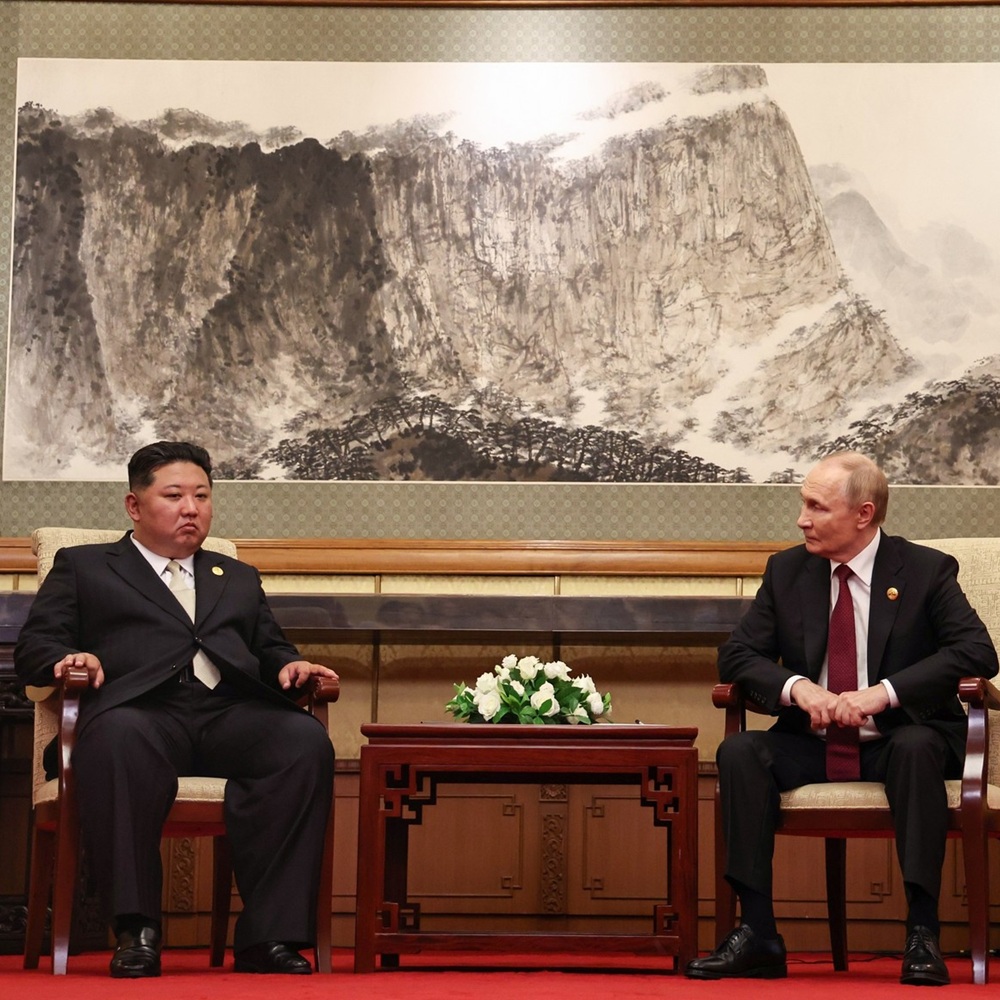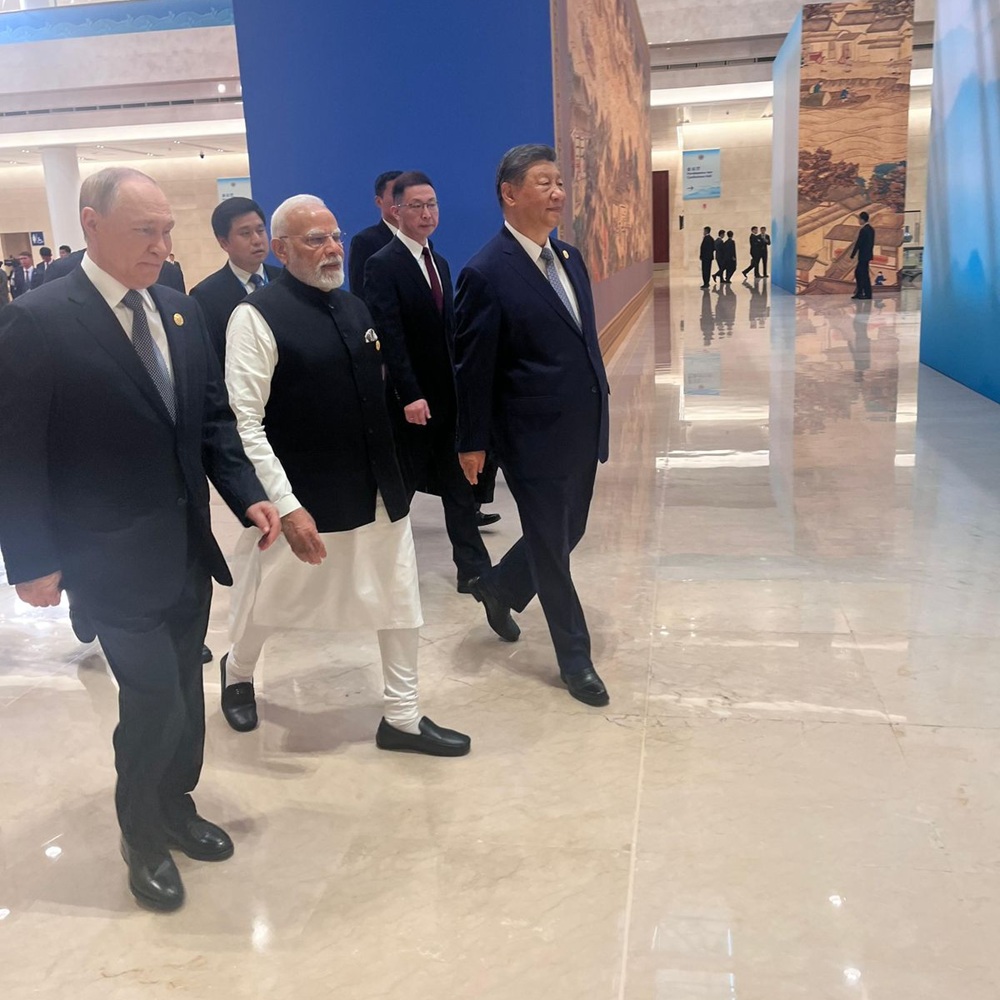
Hybrid Warfare and the Gray Zone: Russia’s Strategy of Ambiguity in Europe
by World & New World Journal
Introduction In the past few years, international tensions have intensified across the globe, from Russia’s invasion of Ukraine to rising frictions between China and Taiwan. These conflicts cannot be fully explained through traditional military or diplomatic frameworks. Instead, they reveal the emergence of a new strategic model: hybrid warfare, a method that blends military, economic, technological, and informational tools to achieve political goals without open war. Closely related is the concept of the gray zone, a sphere of competition that exists between peace and full-scale conflicts, where states use ambiguity to avoid direct confrontation. The ongoing war in Ukraine demonstrates how hybrid warfare operates in practice. Russia’s combination of cyberattacks, disinformation, economic pressure, and drone warfare shows how modern conflicts blur the boundaries between combat and politics. Low-cost technologies such as drones have further revolutionized this form of warfare, enabling small actors to inflict significant damage and minimizing direct risk at the same time. What is a Hybrid warfare and gray zone Gray zone The concept of hybrid war is often covered in media as a synonym for the gray zone. However, within the academic field, the gray zone is considered more of a competing term2 It is suggested that the terms are not synonymous, and the gray zone is defined as a space of competition short of war. Hybrid warfare, in this context, is viewed as an operational solution to achieve political objectives in the gray zone, though it is not limited to it. Although both terms have a quite similar approach, the gray zone is considered more physical in comparison to hybrid war. A state’s operation in this area may clearly not cross the thresholds of war due to its ambiguity. For instance, an invasion of drones in the European Union might serve as an example of such a gray zone action. It is difficult to consider such actions as a threat of war, allowing the predatory state to operate near a border and keep itself safe through ambiguity. Simply put, the gray zone is a territory in politics where it is hard to clearly identify aggression, and the aggressor acts ambiguously, finding legal loopholes to gain advantages without necessarily provoking a military response. Historically, there are numerous examples of such gray zone tactics. Russia used these tactics multiple times before the full-scale invasion of Ukraine. This is one of the particular reasons why the world’s reaction to the Crimea annexation and Russian actions prior to 2022 was low-key and had little impact. A gray zone conflict demonstrates a fundamental change in the rules-based international order. By weaponizing ambiguity, one state seeks to undermine norms and erode democratic institutions from within. Interestingly, Philip Kapusta argues that the gray zone might be beneficial. The ambiguity that makes gray zones vexing also makes them useful to statesmen. It is crucial in international relations when one state tests the waters with gray zone activities to determine the potential strength of domestic or international commitments to an endeavor without resorting to the more lethal violence of war. Briefly saying, gray zone conflicts are an immensely better alternative to full-scale wars. [1] [2] What is a hybrid war? While gray zone competition describes the ambiguous environment between peace and war, hybrid warfare refers to the methods used within that environment to achieve political aims. In other words, the gray zone sets the stage, and hybrid warfare provides the playbook. The new concept of hybrid warfare and its correlating hybrid threats can be explained as a wide range of means, not necessarily violent, and a concept that is quite distant from traditional military power. Through non-violent means, a state can achieve a political effect without being embedded in an armed conflict. This term was introduced by Frank G. Hoffman, who described the warfare model as a collection of different strategies and models, including conventional capabilities, violence, coercion, terrorist acts, and criminal disorder. This definition stressed the importance of combining traditional military force with the use of new technologies. [5] However, several scholars question whether hybrid warfare truly represents a new paradigm. Analysts such as Michael Kofman and Lawrence Freedman argue that the term simply rebrands long-standing practices of covert and irregular warfare under a modern label. From this perspective, hybrid tactics—combining propaganda, subversion, and limited military action—were already evident in Soviet “active measures” and Cold War proxy conflicts. Still, the scale and technological sophistication of Russia’s recent operations suggest that hybrid warfare has evolved in scope and impact, even if its core logic is not entirely new. [13] Key characteristics and elements of hybrid warfare include: Fluidity and Ambiguity Debates on hybrid war in Ukraine in 2014 brought attention to the new term. The fluidity and ambiguity of hybrid threats and warfare helped Moscow to achieve a relatively non-violent political shift in Crimea. To escape a power balance, Russia used a creative underdog strategy. [4] Non-State Actors For some scholars, hybrid war and its actors are a new breed of non-state actors (likely sponsored by the state) who replaced the traditional concept of terrorists. They retain ties with the population and devote themselves to the propaganda of the deed. Diverse Definitions The definition of hybrid warfare differs between the West and Russia. For Russians, hybrid war is a new way of dealing with a conflict that avoids the traditional battlefield, utilizing economic, political, and socio-cultural methods. [6] Tactical Methods and Synchronization It is hard to clearly identify hybrid threats of warfare due to their ambiguous nature. However, most of the literature defines it by tactical methods. It is the synchronized use of several operation methods, and due to its unclear nature, the victim state may not be able to identify these multiple instruments. [5] Calculated Ambiguity Similarly to nuclear deterrence, hybrid warfare is full of calculated ambiguity. It is a key factor that makes it reasonable and effective; it is essential. [12] Thus, due to the gray zone's ambiguity, it is hard to indicate hybrid threats until they escalate into warfare. And even in such a case, one cannot necessarily say that hybrid warfare actually happened. Currently, there are high possibilities that Russia has used hybrid threats in several Baltic countries as well as Eastern Europe. So-called pro-Russian parties were critically close to winning presidential or parliamentary elections numerous times Comparison Hybrid war vs Gray zone Since gray zone conflict in its essence can incorporate traditional methods and unconventional tactics, and a complete reliance on unconventional techniques is likely to be less effective at fully and rapidly compelling a relatively strong opponent, states engaged in a gray zone conflict are likely to use hybrid techniques. To clearly illustrate the key notices from this comparison, the following table is provided. As Table illustrates, the primary difference lies in the level and ambition of each concept. The Gray Zone Conflict is a higher-level concept that operates at the strategic level and is directly tied to global and/or regional revisionist ambitions. Hybrid Warfare, conversely, generally pertains only to the operational and tactical levels. [3] Key distinctions between two concepts are Duration and Symmetry and Conventionality of Operations Duration and Symmetry Gray Zone Conflict is characterized by protracted engagement and is used under both symmetric and asymmetric conditions. Hybrid Warfare, however, may be protracted or short and is largely used under asymmetric conditions. Conventionality of Operations In Gray Zone Conflict, non-conventional military operations may be used standalone or alongside conventional operations8. In contrast, Hybrid Warfare treats non-conventional operations as auxiliary tactics used alongside conventional operations. This reinforces the idea that the Gray Zone is a large strategic territory of competition, while hybrid warfare is an operational solution frequently used within it. Drones as a tool of Hybrid warfare Drones' Impact on the Modern Battlefield Nowadays, conflict in Ukraine has proven the role of drones in modern battlefields. Drones now account for approximately 70% of total casualties from both sides. Moreover, it is hard to find actual troops in the war zones; most of the time, there are drone controllers rather than typical soldiers. Thus, in Ukraine, drones act as key actors in modern conflict. Throughout the war, it was clearly shown that drones are very useful against much more expensive and massive military equipment like tanks and planes. A drone that costs less than a thousand dollars can destroy a million-dollar tank, and what's even more terrifying, it is unmanned, meaning the fight will have fewer casualties. By using such drones, Ukraine was able to defend its borders without a further escalation of the conflict to the western part of the country. By using cheap and easy-to-use AI-powered technology, Kyiv was able to fight back against a state that is 28 times bigger. Drones in Ukraine and the Context of Russian Hybrid Warfare The role of Unmanned Aerial Vehicles (UAVs) remains complex: in direct combat, Ukraine uses drones not strictly as a hybrid weapon but as a fully powered kamikaze to destroy local goals, functioning as a conventional weapon. However, the nature of these drones is inherently dual use. Some drones used in war can be purchased through commercial websites. For instance, the drone previously used by Ukraine, the «DJI MAVIC», can be purchased online, with a price range starting at $500. Such drones are modified on the field and used as small bombs. In comparison to Russians, some Ukrainians have even spent their own money on new ammunition or drones, creating an emerging civilian-led military supply market in Ukraine. The conflict in Ukraine is multi-dimensional with blurred lines between the kinetic use of military force and the non-kinetic use of strategic assets. Through the simultaneous use of political, technological, and military measures in achieving its policy objectives to design an ambiguity, Russia deliberately exploited its power to secure consensus for subsequent military actions. Russia has employed all three parameters of ambiguity in hybrid warfare, leaving Ukraine no other option except to fight. Hybrid war in EU? Russia's Strategy: Hybrid Warfare and Grey Zone Tactics Since the US established its dominance in the global stage, Russian involvement in the Baltics, Crimea, and Eastern Ukraine since 2007 has been characterized as grey zone and hybrid warfare. Russia employs these tactics against EU and NATO participants, using several methods of cyber-warfare to challenge the military alliance. In Ukraine’s Crimea, for instance, Russia engaged in hybrid warfare by using non-state proxies to supplement a military deficit. In Eastern Europe, Russia relies on economic tools, cyberspace to harm infrastructure, as well as non-state actors. For example, Gazprom canceled a gas discount agreement with the Yanukovych administration. Subsequently, when Ukraine refused to accept Russian hegemony, the power grid was attacked and disabled a large portion of the country's infrastructure. Such incidents, includes alleged election interference in Romania, when in November 2024, Romania’s Constitutional Court annulled results of first-round presidential election. Romanian intellegence agencies presented that Russian-linked cyber operations (social media campaigns with AI-driven misinformation and alleged cyberattacks) distorted the electoral process in favour of the far right candidate. In March 2025, investigative reporting detailed pro-Russia groups using Telegram to recruit EU-based individuals for sabotage, vandalism, arson and influence operations across NATO countries. [14] As the Russian economy is strained, the frequency of similar incidents appears to increase. [7] Across the period, the lines between hacktivism, cybercrime and state-nexus activity continued to blur. Intrusion sets historically distinguished by TTPs’ level of advancement. conducted activities, or assessed objectives increasingly shared toolsets and modus operandi. This was notably exemplified by hacktivist-led DDoS waves by pro-Russia groups around electoral events, where increased activity was often observed as typical FIMI-aligned behavior to associate disruption with aspects of information operations. A prominent facet of this trend is faketivism, where state-aligned intrusion sets leverage hacktivist personas and activities. Notable examples include Cyber Army of Russia Reborn, associated to Russia-nexus Sandworm39, and the CyberAv3ngers group linked to Iran’s IRGC Hacktivists, seeking funding and visibility, embraced ransomware beyond DDoS and defacements. CyberVolk, operating in line with Russian interests, has used and promoted multiple strains—AzzaSec, HexaLocker, Parano, as well as LockBit and Chaos—since May 20244. KillSec, originally a pro-Russia hacktivist brand aligned with Anonymous, debuted its platform in June 2024. Drone Incursions: Testing Defenses and Undermining Support Russia has adapted new drone technologies and is now using them to test and threaten the European Union. For Europe, the usage of drones differs from the frontlines. Most incidents involve UAVs allegedly used for espionage or as a distraction mechanism. The possibility exists that drones sent into EU airspace are meant to frighten Europe and consequently pressure them to reduce military aid to Ukraine. Some argue that Russia uses this as a "carrot and stick" approach to force the EU to cut off military support. [8] Drones in the EU serve as one element of hybrid warfare: they are low-cost, deniable, and intentionally ambiguous. Russia's ambiguous attacks and hybrid threats, according to reports, might leave Europe's energy consumers vulnerable, especially during the winter. Economic Constraints and the Strategy of Exhaustion The financial strain on Russia does not diminish its ambitions. Such economic limitations directly shape Moscow’s strategic calculus. While the Central Bank attempts to manage the economy, the cumulative effect of sanctions and military expenditures is challenging the Kremlin's ability to cover its costs. Russian citizens and businesses are demonstrating creativity in navigating sanctions, but continued war and higher expenses are highly likely to destroy the economy. To maintain spending, the government is already seeking additional revenue sources by increasing taxes and fees on imports and making cuts to non-military budgets. [9] The consensus among experts is that a direct military conflict with NATO is highly unlikely, primarily due to Russian economic struggle. Russia simply cannot afford another large-scale war. [9] Even to sustain a major conflict with NATO, the state would first need to consolidate its forces by ending the war in Ukraine. Escalation Risk and European Resilience The latest drone attacks pose a severe threat to European energy and critical infrastructure. Even though recent drone incidents were relatively far away from key energy assets, they still represent a significant and deliberate risk. Reports suggest a potential disruption in energy supply, especially with winter approaching, could lead to price increases and higher heating costs, impacting not only the economy but also social stability. For instance, drone activity temporarily closed airports in Denmark, increasing the overall atmosphere of unease across EU countries. The Gray Zone attacks in Europe, including drone incursions, regular cyberattacks, and election interference, are part of a coherent hybrid warfare strategy aimed at testing Europe's resilience and preparedness. As international expert Christo Atanasov Kostov suggests, the Kremlin hopes to exhaust the West, not conquer it. This strategy aims to win in Ukraine by weakening the West—using hybrid tools to sow doubt over EU and NATO's ability to prevail and to cause domestic hardship that makes supporting Ukraine politically unattractive. [10] However, some scholars like Mark Galeotti argue that Russia’s hybrid campaigns have reached their limit: they can destabilize but not dominate resilient states. [15] It is very unlikely that Russia will cross the line of hybrid warfare and actually commit conventional forces against EU/NATO, as it is financially and politically untenable. The challenge for Europe is clear: to resist fatigue and demonstrate resilience, not fear. Moscow will likely continue its hybrid attacks, but Europe needs to be prepared through deterrence, technological and political autonomy, and collective defense. [11] Conclusion Hybrid warfare is a strategy that combines conventional military force and non-conventional forces to achieve a strategic political objective. Russia's campaign in Ukraine in 2014 successfully exploited the ambiguity of this hybrid warfare model to capture the initiative and secure political and military gains, particularly in Crimea and Donbas. Through drones, cyber operations, and economic pressure, Moscow continues to challenge European security while remaining below the traditional threshold of conflict. These actions show that hybrid warfare is not an alternative to war but a constant state of confrontation carried out through indirect means. For Europe, this reality creates serious strategic and financial challenges. Responding to low-cost and deniable attacks with expensive defense systems is unsustainable in the long term. Therefore, the main priority for the EU is to adapt its deterrence model, strengthen technological and informational resilience, and reduce dependence on external energy supplies. The evolution of hybrid warfare proves that modern conflicts no longer begin with formal declarations or visible invasions. They emerge through ambiguity, disinformation, and the silent use of technology. As Russia continues to exploit these gray areas, the stability of Europe will depend on its ability to recognize such operations early and respond collectively before the next stage of escalation begins. All we can conclude is that Putin himself is unlikely to stop the war until his maximalist ambitions are satisfied. He will continue to use any method, including the destruction of European stability through hybrid attacks, to exhaust the West. For the EU, the suggested course of action remains to diversify energy sources and demonstrate resilience against hybrid attacks to minimize security and economic challenges. References [1] Damien Van Puyvelde, ‘Hybrid Warfare – The Continuation of Ambiguity by Other Means’, European Journal of International Security, Cambridge University Press, 2019, https://www.cambridge.org/core/journals/european-journal-of-international-security/article/hybrid-warfare-the-continuation-of-ambiguity-by-other-means/1B3336D8109D418F89D732EB98B774E5 [accessed 17 October 2025]. [2] U.S. Special Operations Command, Operating in the Gray Zone: A Strategy for Success, 2015, https://info.publicintelligence.net/USSOCOM-GrayZones.pdf [accessed 17 October 2025]. [3] David Carment and Dani Belo, War’s Future: The Risks and Rewards of Grey-Zone Conflict and Hybrid Warfare, Webster University, October 2018, https://doi.org/10.13140/RG.2.2.25994.98249 [accessed 17 October 2025]. [4] Nathan K. Finney, ‘A Full Spectrum of Conflict Design: How Doctrine Should Embrace Irregular Warfare’, Irregular Warfare Initiative, 2023, https://irregularwarfare.org/articles/a-full-spectrum-of-conflict-design-how-doctrine-should-embrace-irregular-warfare/ [accessed 17 October 2025]. [5] Frank G. Hoffman, Hybrid Warfare and Challenges, Potomac Institute for Policy Studies, 2007, https://www.potomacinstitute.org/images/stories/publications/potomac_hybridwar_0108.pdf [accessed 17 October 2025]. [6] Steven Woehrel, Russia: Strategic Economic and Energy Interests, Congressional Research Service, 2011, https://sgp.fas.org/crs/row/R42006.pdf [accessed 17 October 2025]. [7] European Youth Portal, ‘How Romania’s Presidential Election Became the Plot of a Cyber Thriller’, 2024, https://youth.europa.eu/news/how-romanias-presidential-election-became-plot-of-cyber-thriller_en [accessed 17 October 2025]. [8] BBC Russian, ‘Как Россия готовится к выборам на фоне войны и цензуры’, 2024, https://www.bbc.com/russian/articles/cm2zp2xl62mo [accessed 17 October 2025]. [9] Reuters, ‘Imported Cars Face Higher Fees as Russia Plans Domestic Production Boost’, 30 September 2024, https://www.reuters.com/business/autos-transportation/imported-cars-face-higher-fees-russia-plans-domestic-production-boost-2024-09-30/ [accessed 17 October 2025]. [10] Stefan Wolff, ‘Russia’s Permanent Test Is Pushing Europe to the Brink of War – Here’s What Moscow Actually Wants’, The Conversation, 2024, https://theconversation.com/russias-permanent-test-is-pushing-europe-to-the-brink-of-war-heres-what-moscow-actually-wants-266826 [accessed 17 October 2025]. [11] Stefan Wolff, ‘Putin’s “Forever War” Against the West’, The Conversation, 2024, https://theconversation.com/putins-forever-war-against-the-west-267679 [accessed 17 October 2025]. [12] Frank G. Hoffman, ‘Countering Hybrid Warfare: So What for the Joint Force?’, PRISM – National Defense University Press, 2019, https://ndupress.ndu.edu/Media/News/News-Article-View/Article/1979787/countering-hybrid-warfare-so-what-for-the-joint-force/ [accessed 17 October 2025]. [13] Oscar Jonsson and Robert Seely, ‘Russian Hybrid Warfare and Other Dark Arts’, War on the Rocks, 11 March 2016, https://warontherocks.com/2016/03/russian-hybrid-warfare-and-other-dark-arts/ [accessed 17 October 2025]. [14] European Union Agency for Cybersecurity (ENISA), ENISA Threat Landscape 2025, 2025, https://www.enisa.europa.eu/publications/enisa-threat-landscape-2025 [accessed 17 October 2025]. [15] Mark Galeotti, Trouble at Home: Russia’s Looming Demobilization Challenge, Global Initiative Against Transnational Organized Crime, June 2025, https://globalinitiative.net/wp-content/uploads/2025/06/Mark-Galeotti-Trouble-at-Home-Russias-looming-demobilization-challenge-GI-TOC-June-2025.pdf [accessed 17 October 2025].









